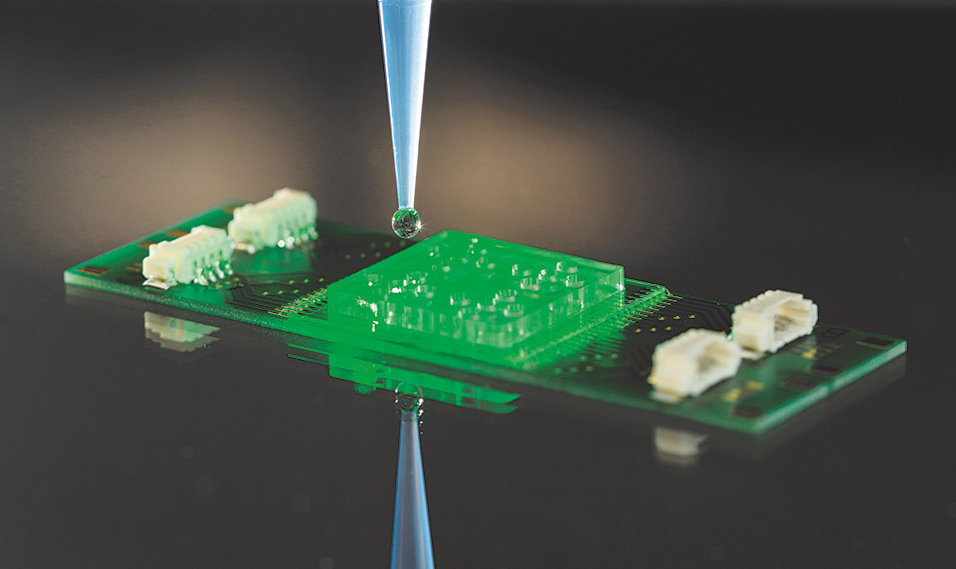InfectoGnostics scientists from the Leibniz Institute for Photonic Technologiy (Leibniz-IPHT) , the Jena University Hospital and the Friedrich Schiller University Jena are working on a fast, cost-effective alternative to the previously time-consuming microbiological pathogen diagnostics. "We combine light-based analysis methods with microfluidic sample processing. With our lab-on-a-chip system, we can clearly determine bacterial strains and their resistance in less than three and a half hours," says project manager Prof. Ute Neugebauer explaining the advantage of the new approach.
Standard methods for the diagnosis of infections sometimes take 72 hours until a reliable result is obtained. One of the reasons for this is that the number of pathogens in a patient sample is far too small to be able to carry out tests. Analysis is only possible after time-consuming cultivation. Time is a decisive factor, especially in clinical applications, in the treatment of severe infections, such as sepsis. Intensive care physicians are faced with a worrying dilemma: "Far too often we have to treat 'blindly' with broad-spectrum antibiotics because we cannot initially determine the pathogen or any existing resistance. Therefore we may crack a nut with a sledgehammer. A vicious circle that favours the development of new resistances," explains Prof. Michael Bauer, Director of the Clinic for Anaesthesiology and Intensive Care Medicine at the University Hospital of Jena.
Fast, light-based diagnostics in stamp-sized lab-on-a-chip format
The new procedure from Jena provides a significantly faster diagnosis as the basis for a reliable therapy decision. Ute Neugebauer, who works at Leibniz-IPHT and Jena University Hospital, points to tiny electrodes attached to the surface of the chip, which is about the size of a stamp: "Here, electric fields fix the bacteria in a very small area. Trapped there, the Jena researchers bring the pathogens into contact with different antibiotics in different concentrations and examine them using Raman spectroscopy. "This means that we irradiate the pathogens with laser light and evaluate the scattered light spectrum," said Neugebauer describing the method.
"Already after two hours we see clear changes in the Raman spectra. This can be used to determine whether the strain is resistant or sensitive," explains Prof. Jürgen Popp, Director of Leibniz-IPHT and Head of the Institute of Physical Chemistry at the Friedrich Schiller University in Jena. "At the same time, we receive information on how high the concentration of the antibiotic has to be in order to completely inhibit bacterial growth. This is an important diagnostic parameter that has a decisive influence on the success of the treatment," Popp continues. The results were presented by the team of chemists, physicians and biologists in the February issue of the high-ranking journal Analytical Chemistry.
From sampling to result: Chip is almost 70 hours faster
The combination of fast, light-based diagnostics and a high degree of automation reduces the time from sampling to result from 72 to 3.5 hours. "Prof. Bettina Löffler, Director of the Institute of Medical Microbiology at the University Hospital of Jena, is convinced that such rapid diagnostics could revolutionise the treatment of serious infectious diseases. The researchers are currently working on a platform for use in hospitals. A far-reaching goal for the future is the development of a cartridge-based rapid test system that for the first time will enable GPs to determine resistance quickly and easily. This would provide physicians with a powerful tool that supports them in making personalised therapy decisions, i.e. in allocating the appropriate medication.
The research work was funded by the European Union, the Federal Ministry of Education and Research, the Free State of Thuringia and the Carl Zeiss Foundation.
Contain the spread of antibiotic resistance: Rapid test determines efficacy of antibiotics
